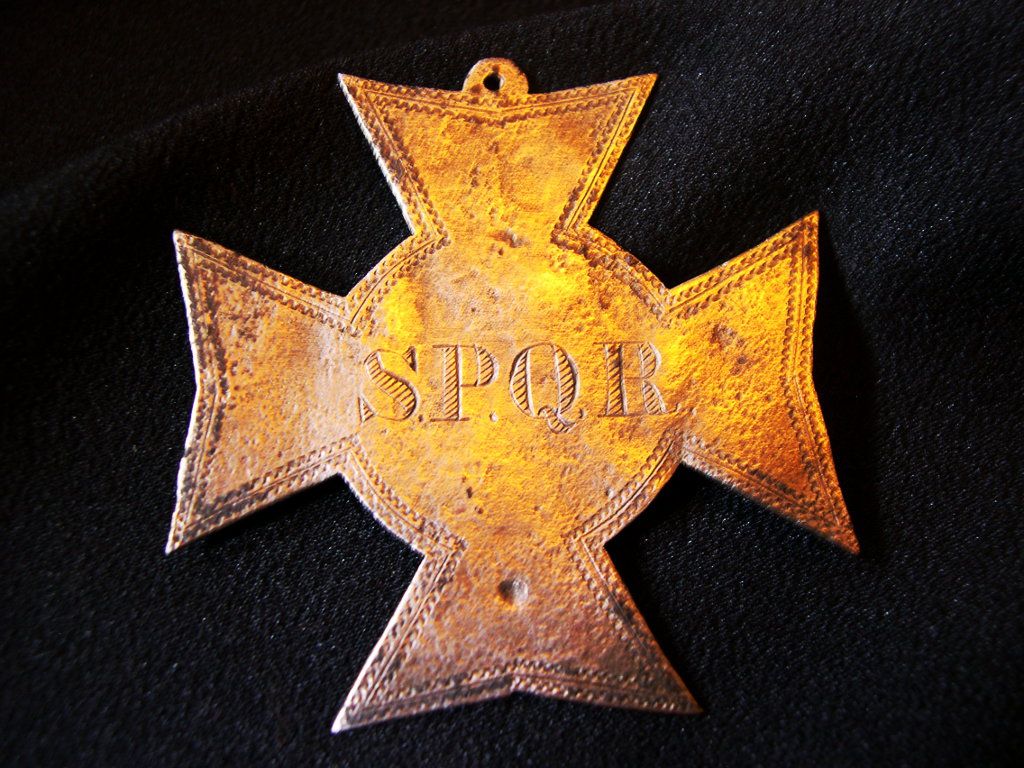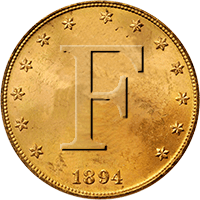William-NM
New member
... got more than I bargained for! As Tom Petty said it so well; "Baby, even the losers get lucky sometimes", heh.

Then, Tigger was complaining that he hasn't had an adventure lately, so I tossed him in the car and we headed up to an old mining site that I wanted to check. The hike in was about a mile through some brushy hills and dry washes. The brush fights back around here, too. If the catclaw doesn't get you, the ironwood will. Tig had the size and four-paw drive advantage. He seemed to remember the site, as he was straight up the same tree that he kept watch from on our last visit.


I didn't find much in the way of interesting relics - this was a medium sized corporate type operation, probably 50-75 years ago. Just a bunch of iron pipe and junk, an old wooden sluice, and 55 gallon drum agitator. I did eventually find an area where it looked like the output from a hydraulic wash came out. I started getting a lot of high 80s signals and collected a bunch of what seems to be silver. It acid tests OK - about 5 ounces of the stuff. This was up in the Gila NF, not too far from the Contintinental Divide National Hiking Trail, and about 2 miles from the small miner's camp I hit a few weeks back.


On to the REALLY important stuff; TOYS!
I found an older TootsieToy armored car from the early 30s or so -it doesn't look too fancy, but has a higher value due to age / scarcity (~$40). Later in the same hunt, I found this Lincoln Logs lead model of Davy Crockett. It's from the "Historical Figures" collection, issued around 1932. Also in the photo is a heavy old whistle from Spalding - it appears to be Nickel or Chrome plated brass. It still works great, I tested it and every dog within 100 miles responded.

I also scored this pre-1900 religious medal/badge.


It's hand engraved, and the front reads S.P.Q.R. per Wikipedia: "SPQR is an initialism from a Latin phrase, Senātus Populusque Rōmānus ("The Senate and People of Rome", see translation), referring to the government of the ancient Roman Republic, and used as an official emblem of the modern day comune (municipality) of Rome. It appears on coins, at the end of documents made public by inscription in stone or metal, in dedications of monuments and public works, and was emblazoned on the standards of the Roman legions." "...the sentence is translated as the more literal "The Senate and the Roman People", or alternatively as "The Senate and the People of Rome"."
The back reads "Grace Chapel / Co. 4K of T / Diocesan Corps. / of N.Y." So, obiously a religous item, but I haven't tracked it down enough to learn more about thre Diocesan Corps., yet. The back has a maker's mark: Braxmar / N.Y. As Braxmar was bought and moved to New Jersey around the turn of the century, it seems to date before 1900. (Braxmar is still around in some form - they make police and military badges and related items.)
Found a few military buttons: at top left is a Texas Star made by Pettibone Mfg. of Cincinnati, Ohio. Next is a gilt Great Seal button made by D. Evans & Co, Attleboro, Mass., and on the right is an Indian Wars Eagle & Arrows brass button by Horstmann, Philadelphia. On the bottom are two as yet unidentified buttons by the Henderson-Ames Co. depicting two stags on either side of a shield with an eagle at the top.

Here are a couple of tokens and a Chinese coin. I haven't tackled ID'ing the Chinese coin. The aluminum token is a Colorado Retail Sales Tax token with a denomination of 2 (cents? mils?). It's the same on front and back and pretty worn. The other one is a generic 5c brass token. I found it listed in the token database, but there was no further info on it - presumably a hotel gave it to guests when they checked in, to be used in the saloon or something.

And here's a religious medallion (aluminum) and a brass disc with two holes that has a "N" in the center with the words "Pat 6-20-05" above. It was found along the railroad trackson the site of an old rr building in the ghost town of Fierro (and the other 2 items in this photo were found on nearby homesites). One of the benefits of following the slob of a MD'er who leaves craters all over is that I sometimes find good targets that he misses, heh. That's where the tiny copper token or ?? was found. It Says "Alianza Hispano Americana" and - P.M.I. - .,, again, courtesy of Wikipedia (this is why I contribute to them, heh):
Mutualistas were community-based mutual aid societies created by Mexican immigrants in the late 19th century United States. According to media analyst Charles M. Tatum, mutualistas
"provided most immigrants with a connection to their mother country and served to bring them together to meet their survival needs in a new and alien country. Cultural activities, education, health care, insurance coverage, legal protection and advocacy before police and immigration authorities, and anti-defamation activities were the main functions of these associations.[1]
Sometimes mutualistas were part of larger organizations affiliated with the Mexican government or other national associations. One such association included Alianza Hispano-Americana, which, founded in 1894 in Tucson, Arizona Territory, had 88 chapters throughout the Southwestern United States by 1919. Usually mutualistas had separate women's auxiliaries, but some, including Club Femenino Orquidia in San Antonio, Texas and Sociedad Josefa Ortiz de Dom

Then, Tigger was complaining that he hasn't had an adventure lately, so I tossed him in the car and we headed up to an old mining site that I wanted to check. The hike in was about a mile through some brushy hills and dry washes. The brush fights back around here, too. If the catclaw doesn't get you, the ironwood will. Tig had the size and four-paw drive advantage. He seemed to remember the site, as he was straight up the same tree that he kept watch from on our last visit.


I didn't find much in the way of interesting relics - this was a medium sized corporate type operation, probably 50-75 years ago. Just a bunch of iron pipe and junk, an old wooden sluice, and 55 gallon drum agitator. I did eventually find an area where it looked like the output from a hydraulic wash came out. I started getting a lot of high 80s signals and collected a bunch of what seems to be silver. It acid tests OK - about 5 ounces of the stuff. This was up in the Gila NF, not too far from the Contintinental Divide National Hiking Trail, and about 2 miles from the small miner's camp I hit a few weeks back.


On to the REALLY important stuff; TOYS!
I found an older TootsieToy armored car from the early 30s or so -it doesn't look too fancy, but has a higher value due to age / scarcity (~$40). Later in the same hunt, I found this Lincoln Logs lead model of Davy Crockett. It's from the "Historical Figures" collection, issued around 1932. Also in the photo is a heavy old whistle from Spalding - it appears to be Nickel or Chrome plated brass. It still works great, I tested it and every dog within 100 miles responded.

I also scored this pre-1900 religious medal/badge.


It's hand engraved, and the front reads S.P.Q.R. per Wikipedia: "SPQR is an initialism from a Latin phrase, Senātus Populusque Rōmānus ("The Senate and People of Rome", see translation), referring to the government of the ancient Roman Republic, and used as an official emblem of the modern day comune (municipality) of Rome. It appears on coins, at the end of documents made public by inscription in stone or metal, in dedications of monuments and public works, and was emblazoned on the standards of the Roman legions." "...the sentence is translated as the more literal "The Senate and the Roman People", or alternatively as "The Senate and the People of Rome"."
The back reads "Grace Chapel / Co. 4K of T / Diocesan Corps. / of N.Y." So, obiously a religous item, but I haven't tracked it down enough to learn more about thre Diocesan Corps., yet. The back has a maker's mark: Braxmar / N.Y. As Braxmar was bought and moved to New Jersey around the turn of the century, it seems to date before 1900. (Braxmar is still around in some form - they make police and military badges and related items.)
Found a few military buttons: at top left is a Texas Star made by Pettibone Mfg. of Cincinnati, Ohio. Next is a gilt Great Seal button made by D. Evans & Co, Attleboro, Mass., and on the right is an Indian Wars Eagle & Arrows brass button by Horstmann, Philadelphia. On the bottom are two as yet unidentified buttons by the Henderson-Ames Co. depicting two stags on either side of a shield with an eagle at the top.

Here are a couple of tokens and a Chinese coin. I haven't tackled ID'ing the Chinese coin. The aluminum token is a Colorado Retail Sales Tax token with a denomination of 2 (cents? mils?). It's the same on front and back and pretty worn. The other one is a generic 5c brass token. I found it listed in the token database, but there was no further info on it - presumably a hotel gave it to guests when they checked in, to be used in the saloon or something.

And here's a religious medallion (aluminum) and a brass disc with two holes that has a "N" in the center with the words "Pat 6-20-05" above. It was found along the railroad trackson the site of an old rr building in the ghost town of Fierro (and the other 2 items in this photo were found on nearby homesites). One of the benefits of following the slob of a MD'er who leaves craters all over is that I sometimes find good targets that he misses, heh. That's where the tiny copper token or ?? was found. It Says "Alianza Hispano Americana" and - P.M.I. - .,, again, courtesy of Wikipedia (this is why I contribute to them, heh):
Mutualistas were community-based mutual aid societies created by Mexican immigrants in the late 19th century United States. According to media analyst Charles M. Tatum, mutualistas
"provided most immigrants with a connection to their mother country and served to bring them together to meet their survival needs in a new and alien country. Cultural activities, education, health care, insurance coverage, legal protection and advocacy before police and immigration authorities, and anti-defamation activities were the main functions of these associations.[1]
Sometimes mutualistas were part of larger organizations affiliated with the Mexican government or other national associations. One such association included Alianza Hispano-Americana, which, founded in 1894 in Tucson, Arizona Territory, had 88 chapters throughout the Southwestern United States by 1919. Usually mutualistas had separate women's auxiliaries, but some, including Club Femenino Orquidia in San Antonio, Texas and Sociedad Josefa Ortiz de Dom







